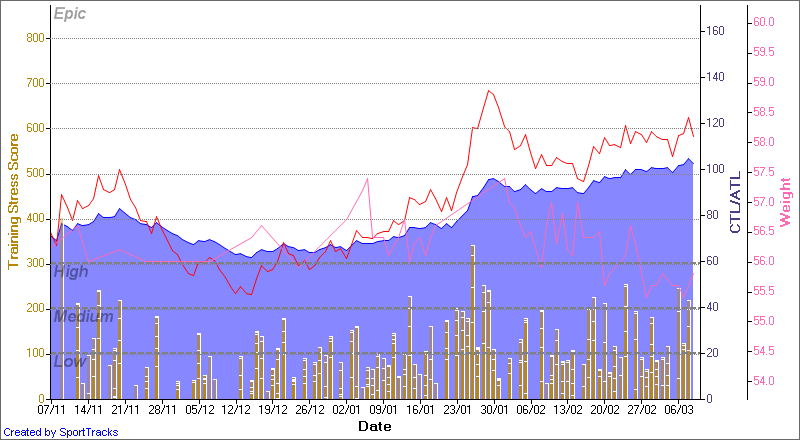The background and preamble to these recipes can be found here.
Basic Sports Drink Mix
Makes 24 servings @ 30g per serving (120 calories)*.
- 5 1/4 cups or 720g maltodextrin
- 1 tsp or 3600mg lo-salt
- 2 tsp or 7200mg sea salt
- 2 tsp or 2400mg calcium powder
- 3.5 tsp or 1200mg magnesium powder
- optional: some kind of flavouring to taste, as desired (i.e., cocoa powder, Kool-Aid packets or myprotein.co.uk powdered flavours, or a tiny bit of fruit juice once mixed)
- optional: caffeine powder, use at your own risk but more than 50mg per serving is not recommended
*Mixed with 375mL of water, it's a 7.5% solution, though maltodextrin's osmolality means it can be mixed as high as 24% in solution. 10-12% is recommended, but I like my drinks to be weakly flavoured as I generally only use them in intense activities or hot conditions.
Basic Endurance Mix
Makes 24 servings @28g per serving (113 calories) with 7:1 carbs to protein ratio.*
- 1075mL or 615g maltodextrin
- 140mL or 80g soy protein powder
- optional: some kind of flavouring to taste, as desired (i.e., cocoa powder, Kool-Aid packets or myprotein.co.uk powdered flavours, or a tiny bit of fruit juice once mixed)
- optional: caffeine powder, use at your own risk but more than 50mg per serving is not recommended
*I mix this into a paste, basically 3-4 servings in a small gel flask or many more servings in a regular-sized water bottle. See above notes for more dilute concentrations.
Basic Recovery Mix
Makes 24 servings @ 55g per serving (200 calories) with 3:1 carbs to protein ratio.*
- 3 1/2 cups or 480g maltodextrin
- 2 2/3 cups or 420 g dextrose
- 780mL or 320 g whey powder
- 1/2 cup or 108g glutamine
- 2 tsp or 7200mg lo-salt
- 4 tsp or 14400mg sea salt
- 4 tsp or 4800mg calcium powder
- 7 tsp or 2400mg magnesium powder
- optional: some kind of flavouring to taste, as desired (i.e., cocoa powder, Kool-Aid packets or myprotein.co.uk powdered flavours, or a tiny bit of fruit juice once mixed)
*Mixed into 500mL of water it's just sweet enough and not too salty. Some research (e.g.) has been done showing that drinks with mixed and single carbohydrate sources have similar absorption rates, and since this is a post-workout drink containing protein, I'm not so worried about sugar spikes and stomach upset. Therefore I mix malto and dextrose nearly 50/50 in this drink. 100% dextrose would be way too sweet and 100% malto is a bit bland for my taste in recovery drink.
*Edit September 2010
I've started adding a few more amino acids to my recovery mix to complement the glutamine. To the recipe above, add:
50g HMB
24g BCAAs
5g Tyrosine
By the way, if you like these recipes and want to order your own whey and carbo powders from MyProtein.co.uk, please use my referral code! MP107371




